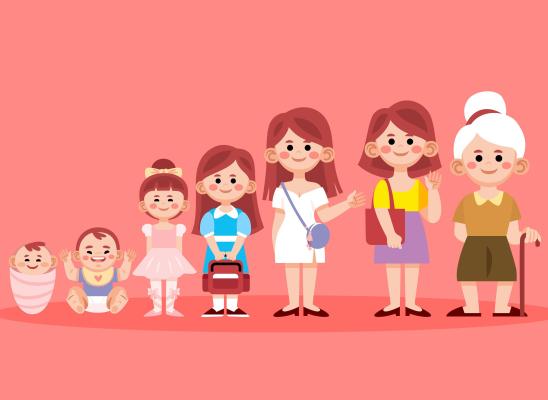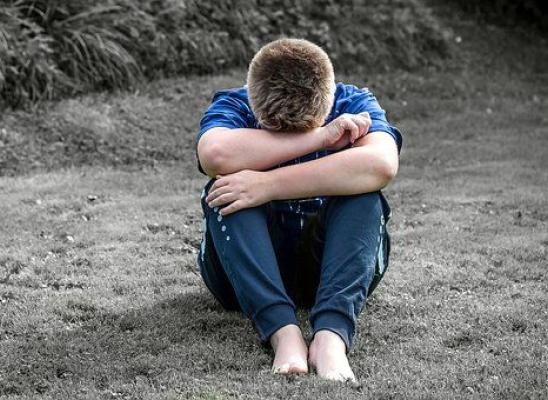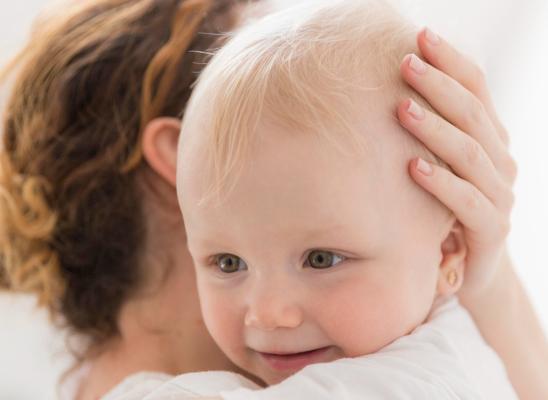Trichobezoars: What They Are and What You Need to Know

Online test
Find out the severity of your symptoms with this free online test
When you think of Trichotillomania (TTM), you usually think of hair pulling, right? Most people do. Have you ever wondered what happens to the hair that’s pulled out? For many people with TTM, they simply discard the hair. It might surprise you though that some people who compulsively pull their hair don’t merely pull it out and discard it. There is a significant percentage of people with TTM that go further. Some people ingest the hair that they pull. This persistent, compulsive ingesting of hair is called trichophagia.
Trichophagia primarily affects females and is most often associated with TTM. However, it can also be associated with other mental health conditions such as anxiety or depression, obsessive-compulsive disorders, pica (the ingestion of non-food substances), and eating disorders.
It is estimated that the prevalence of trichotillomania is about 0.5% to 2.0%. Of that number, between 5 and 20 percent also experience trichophagia. Most of the time, the body will simply expel the ingested hair through the normal digestive process. Sometimes though, the hair can become trapped and cause problems. When that hair gets trapped it can develop into what’s known as a trichobezoar, or hair ball-like structure. These bezoars can cause health issues that can range from mild to life-threatening. Let’s take a closer look trichobezoars and what they mean for people living with trichotillomania.
What Exactly Is a Trichobezoar?
The word trichobezoar is derived from the Greek thrix or trichos meaning “hair” and from the French bézoard based on the Arabic bāzahr meaning “antidote”. In ancient times, hair balls or bezoars from animals were thought to have curative or medicinal properties. The presence of a trichobezoar in a human was first documented in a human in the late 18th century.
A trichobezoar is essentially a mass of ingested hair that becomes entrapped in the gut. You would think that the hair would travel through the digestive tract like food does, propelled by peristalsis, and be eliminated. Unfortunately, that is not the case. Hair is smooth and tends to be resistant to peristalsis. As a result, it can become trapped in the stomach. Over time, the hair accumulates and mixes with gastric liquids and food, becoming trapped in the mucosal folds of the stomach, creating a mass known as a trichobezoar. Sometimes, that mass of hair can become elongated and extend down into the intestines. This is a phenomenon known as Rapunzel Syndrome.
Symptoms
While some people may experience few or even no symptoms in the early formation stage, over time these masses can cause a number of gastrointestinal symptoms. In some cases, these masses can cause intestinal blockages that can become life-threatening. Some of the symptoms that can suggest the presence of a trichobezoar include:
• abdominal pain
• nausea
• vomiting
• anorexia or unexplained weight loss
• pain related to eating or getting full quickly
• chronic bad breath
• intestinal obstruction
• peritonitis
Of course, these symptoms can be associated with many different issues and should be evaluated by a medical professional. In the presences of trichotillomania, trichophagia resulting in a bezoar has to be considered.
Underlying Causes of Trichophagia
Just why someone ingests hair isn’t exactly clear. Early thinking was that there was a nutritional cause and iron deficiency was considered as one possible cause. Psychologically, it has been suggested that ingesting one’s hair may hold unconscious meaning for the person.
Not everyone who has trichotillomania has trichophagia. Studies have actually found more similarities than differences among those with and those without trichophagia. However, one study found that people with trichotillomania and trichophagia experienced more severe hair pulling symptoms than those without trichophagia.
Current thinking is that trichophagia is caused by underlying neurochemical imbalance in the brain. This approach suggests possible treatment options that may include psychotropic medications along with psychotherapy.
Treatment Is Important
For people with a known or suspected trichobezoar, initial treatment often requires surgical removal of the mass. It is highly unlikely that the body will pass the mass or that it will simply degrade over time. In fact, these masses tend to continue to grow over time as more hair is ingested and can become life-threatening.
Part of treating trichobezoars is addressing the underlying cause of the trichophagia. Otherwise, it is likely that the trichophagia will continue and trichobezoar will reoccur. You might assume that the underlying cause of the trichobezoar (besides the actual ingestion of hair) is trichotillomania. Maybe, but it’s not always that clear-cut.
Sometimes, diagnosing and treating trichobezoars can be tricky. A 2020 study examined the case of a person who had a trichobezoar with no clear manifestation of trichotillomania. Further psychiatric evaluation revealed that the person had experienced a number of adverse childhood events and manifestation of conversion symptoms when under stress. She had struggled with depression since childhood and had several stressors in her adult life. The psychiatric evaluation found that there was in fact, a history of hair pulling but no associated urge to pull hair and subsequent gratification which would support a diagnosis of trichotillomania. A diagnosis of depression was given and the hair pulling and trichophagia were attributed to ongoing stress and poor coping skills. This diagnosis was further supported by her history of repeated manifestation of conversion symptoms during childhood and adolescence.
In the case described in the study, the person was prescribed She was prescribed anti-depressant (SSRI) and anti-anxiety medications and education about her illness. Counseling focused on developing healthy coping skills to deal with the stressful situations. Family members were included in the process and advised to remain observant of her hair eating or any other unhealthy behavior. This study points to the importance of including both medical and psychiatric support as well care givers/supports (if available) in the diagnostic and treatment process. Understanding the underlying dynamics is critical to developing a treatment plan that works for the individual and their unique clinical presentation.
It is important for someone living with trichotillomania with trichophagia to seek help. Aside from the clear medical risks, left untreated, trichophagia associated with trichotillomania can impact self-esteem, diminish quality of life, and impair social functioning. of the individual. If appropriate mental health support is not provided after surgical treatment, the probability of another trichobezoar increases.
Removing the trichobezoar is the first step in treatment. The next step is to address the underlying issues associated with the trichophagia and hair pulling.
Medications
There is no one medication that is considered the “gold standard” treatment for hair pulling or for trichophagia. Selective Serotonin Reuptake Inhibitors (SSRIs) are sometimes prescribed as part of the treatment for TTM. Other medications that have been explored as potentially helpful include tricyclic antidepressants, n-acetylcysteine (NAC), olanzapine, and naltrexone.
Therapy
Therapy for TTM with trichophagia may include psychotherapy to address underlying issues, psychoeducation, and cognitive skills development. Cognitive behavioral therapy is treatment of choice for TTM and other body-focused repetitive behaviors. Studies have found it to be one of the most effective interventions for treating TTM. What specific form that therapy takes will depend on the individual and their presentation. Some of the most widely used approaches include Habit Reversal Training (HRT), comprehensive behavioral treatment (Com-B), or ACT-Enhanced Behavior Therapy.
Aside from medication and therapy, finding support is key. If you or a loved one is living with trichotillomania with trichophagia, reach out for support. Educate yourself and build connections with friends, family, and professionals who can take the journey with you. Researchers are hard at work to find new treatment options. There is help and there is hope.
References
1. Sehgal, V. N., & Srivastava, G. (2006). Trichotillomania +/- trichobezoar: revisited. Journal of the European Academy of Dermatology and Venereology : JEADV, 20(8), 911–915. https://pubmed.ncbi.nlm.nih.gov/16922936/
2. Grant, J. E., & Chamberlain, S. R. (2016). Trichotillomania. The American journal of psychiatry, 173(9), 868–874. https://doi.org/10.1176/appi.ajp.2016.15111432
3. Grant, J. E., & Odlaug, B. L. (2008). Clinical characteristics of trichotillomania with trichophagia. Comprehensive psychiatry, 49(6), 579–584. https://www.ncbi.nlm.nih.gov/pmc/articles/PMC2605948/
4. Trichobezoar. (n.d.). Retrieved from https://en.wiktionary.org/wiki/trichobezoar
5. Irving, P. M., Kadirkamanathan, S. S., Priston, A. V., & Blanshard, C. (2007). Education and imaging. Gastrointestinal: Rapunzel syndrome. Journal of gastroenterology and hepatology, 22(12), 2361. https://pubmed.ncbi.nlm.nih.gov/18031403/
6. Gonuguntla, V., & Joshi, D. D. (2009). Rapunzel syndrome: a comprehensive review of an unusual case of trichobezoar. Clinical medicine & research, 7(3), 99–102. https://www.ncbi.nlm.nih.gov/pmc/articles/PMC2757434/
7. McGehee, F. T., Jr, & Buchanan, G. R. (1980). Trichophagia and trichobezoar: etiologic role of iron deficiency. The Journal of pediatrics, 97(6), 946–948. https://pubmed.ncbi.nlm.nih.gov/7441423/
8. Sehgal, V. and Srivastava, G. (2006), Trichotillomania ± trichobezoar: revisited. Journal of the European Academy of Dermatology and Venereology, 20: 911-915. https://doi.org/10.1111/j.1468-3083.2006.01590.x
9. Jain, A., Agrawal, A., Tripathi, A. K., Bansod, R. K., Jain, G., & Yadav, K. S. (2020). Trichobezoar without a clear manifestation of trichotillomania. Journal of family medicine and primary care, 9(5), 2566–2568. https://www.ncbi.nlm.nih.gov/pmc/articles/PMC7380772/
10. Houghton, D. C., Maas, J., Twohig, M. P., Saunders, S. M., Compton, S. N., Neal-Barnett, A. M., Franklin, M. E., & Woods, D. W. (2016). Comorbidity and quality of life in adults with hair pulling disorder. Psychiatry research, 239, 12–19. https://www.ncbi.nlm.nih.gov/pmc/articles/PMC4855296/
11. Cisoń, H., Kuś, A., Popowicz, E., Szyca, M., & Reich, A. (2018). Trichotillomania and Trichophagia: Modern Diagnostic and Therapeutic Methods. Dermatology and therapy, 8(3), 389–398. https://www.ncbi.nlm.nih.gov/pmc/articles/PMC6109030/
12. Grant, J. E. (2016, September 1). Trichotillomania. Retrieved from https://ajp.psychiatryonline.org/doi/10.1176/appi.ajp.2016.15111432
Online test
Find out the severity of your symptoms with this free online test
Start your journey with TrichStop
Take control of your life and find freedom from hair pulling through professional therapy and evidence-based behavioral techniques.
Start Now




